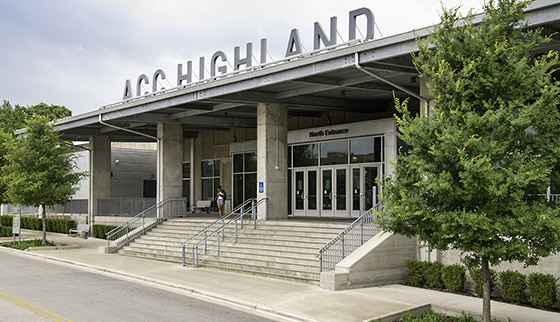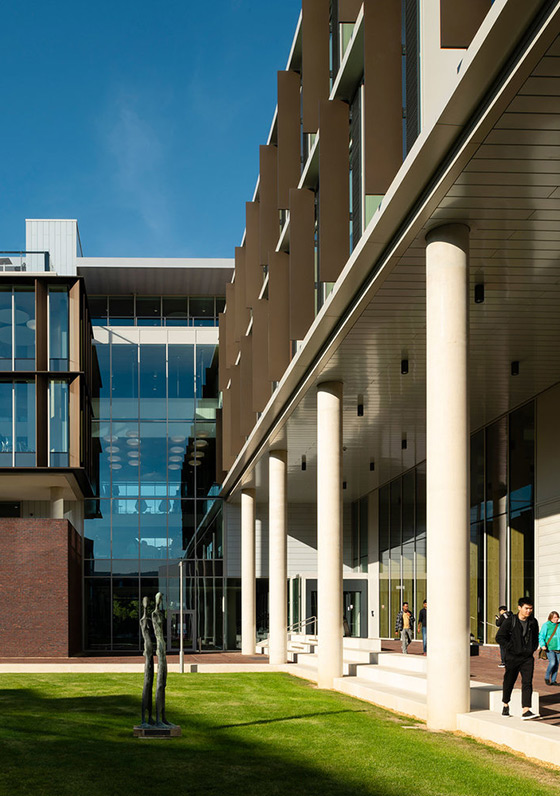Exploring Education
How can relocating universities and schools break down the boundaries between town and gown?
A role of education uses in building place and community
What is increasingly recognized within the higher education (HE) sector is the need to reposition how the universities themselves operate within their towns and cities. Many universities are the size of small towns in their own right; many campuses have clearly defined boundaries and are entirely separated physically to their surrounding place; some Universities are dispersed through their town or city centres, but the mutual benefits of this can still remain untapped. Even Oxford and Cambridge, where the Universities and their colleges are the backbone of the city themselves and many of the colleges own commercial assets within the centres, still have a much recognized “town and gown” divide.
In Manchester, where there are 85,000 students in the main universities, student retention is 52% equivalent to 15,000 new graduates
University is a major employer in any town and city and is fundamental to the success of the local economy
So when a book weary student peers over the parapet and, in some cases, sees an ailing town centre one starts to wonder where it has gone wrong. The wellbeing of the local economy and place is not mutually exclusive to the sustainable future of a University. Student retention post-graduation is a key consideration for local authorities and the town and city needs to be capable of attracting the inward investment, businesses and thriving economy to do so. In Manchester, where there are 85,000 students in the main universities, student retention is 52%; this is equivalent to almost 15,000 new graduates to the city’s economically active work force every year.
Additionally, a university is a major employer in any town and city and is fundamental to the success of the local economy. As such a university’s role in the local economy through greater interaction with businesses, commitments to research and business innovation schemes, greater collaboration with other public sector stakeholders, increased community participation and wider dialogue with the other education providers in the locality, all starts to bridge that “town and gown” divide.
In 2019 the UPP Foundation issued the “Truly Civic” paper setting out the role of a civic University, exploring the wider civic role a university needs to and should be playing in the towns and cities that they occupy. Many University estate strategies have started to explore how they can best break down boundaries with their surrounding place; increasing connectivity and repurposing aspects of their own campus which may stimulate greater interaction with local communities and businesses.
Added to this, a greater need for universities to diversify their income, generating alternative income streams and seeking innovative mechanisms of how they approach their own estate delivery, all points to bolder more integrated real estate solutions with our town and city centres.
For education across the board, there is an exciting, emerging opportunity for vertical integration of uses and greater collaboration between key town and city stakeholders to unlock sustainable futures for our town and city centres. Many great interactions are already happening, but there are many more opportunities to be joining the dots, providing the funding support is available to unlock it.

Why placing education property within retail space works
It has long been recognized that education providers – schools, colleges, universities – are fundamental components to the success of our towns and cities across the UK. There are examples where colleges and universities have boldly upped sticks to ensure they are nestled within town or city centres themselves. Ulster University, for instance, is in the process of moving their entire campus to Belfast city centre and will be located adjacent to Castle Court Shopping Centre.

Within the HE sector, student experience has become ever more important as competition increases and justification for the highest level university fees is more greatly interrogated. Unsurprisingly, student surveys consistently outline a preference for being within town and city centres, experiencing the wider extracurricular benefits that being ‘in the thick of it’ can bring; as well as the sustainability benefits this inevitably provides. Leeds School of Mathematics are currently looking at a department store conversion as it offer the potential for a large footprint right in the middle of the city centre.
A key driver of The University of Northampton’s entire relocation to Northampton town centre, building a new £330m Waterside campus to do so, was bolstering the student experience. Northampton town centre can only prosper from the move, a centre which has the common sorry tale of major out of town retail schemes causing its decline. Opened for the 2018/2019 academic year, the Waterside project has set precedents for the sector. It was based on a strategy formulated when papers such as the IPPR’s “An Avalanche is Coming”(2013) talked of how the HE sector is rapidly changing and diverging and universities could not stand still; if they did, the risk was they would be wiped out. It called for bold moves in a sector and started to explore the evolving role universities can play in our wider communities.

For the HE sector, the US is ahead of the game in how many of its universities are seeking to fully integrate themselves into their places. They have taken on the repurposing mantle with evidence of assets such as shopping centres successfully integrating education uses. One of the best examples is Austin Community College in Texas, which took over the failed Highland Mall in its entirety and has since delivered a 400,000sqft campus. ACC Highland is a seen as a national model for sustainable, adaptive, community-minded reuse, with indoor fountains, unique study spaces, a park, and many neighbouring businesses.
In the UK, while there has been nothing so bold as yet in taking over an entire floor of a shopping centre there are increasing examples of where education has been a principal repurposing use either beside retail, or within it. Deer Park School in Twickenham is being built on two floors above a new 1,123m2 Lidl supermarket on Richmond Road, with capacity for 420 students. Another primary school is proposed for the former Co-op Department store in Ipswich. Similarly, multiple bids were recently made by private education providers on a high street block on Kings Road in Chelsea. In each case there is the potential for having a positive impact on retail as schools drive footfall and tie in well with convenience shopping trips.





